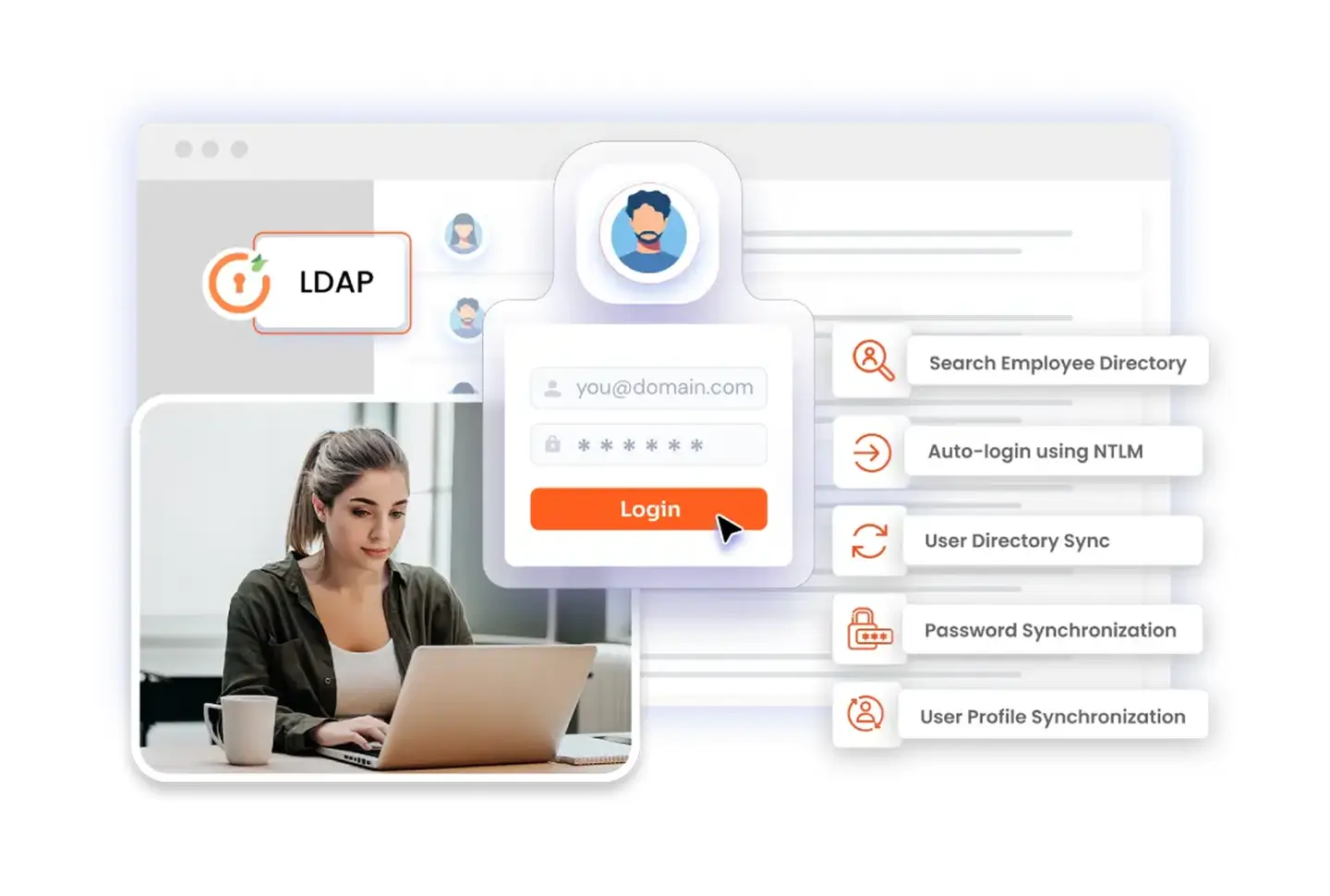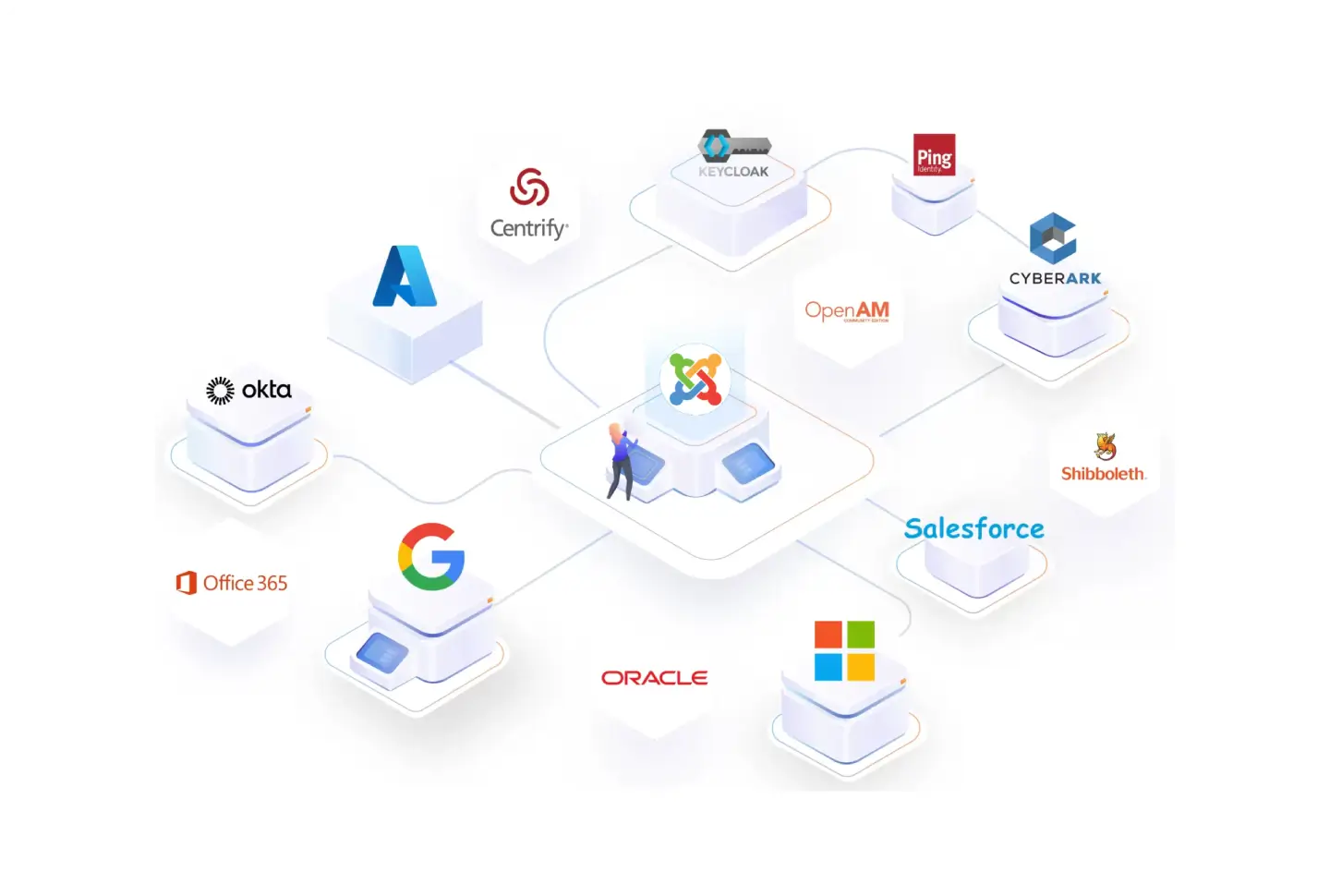Over 86% of security breaches involve compromised credentials (Source: Verizon Business). As the demand for secure login methods continues to grow, Single Sign-On (SSO) has become a must-have feature, not just for large enterprises but also for content management systems like Joomla.
If you're running a Joomla website and want users to authenticate via external Identity Providers (IdPs), two industry-standard protocols stand out: SAML and OAuth (with OpenID Connect). While both enable SSO, they differ significantly in how they operate and where they shine.
Let’s explore how each protocol works, when to use them, and which is the better fit for your Joomla environment.
What is SAML?
SAML (Security Assertion Markup Language) is an XML-based protocol that facilitates authentication between an Identity Provider (IdP) and a Service Provider (SP) — in this case, your Joomla site.
How SAML Works?
When a user tries to access Joomla, they're redirected to the IdP to log in. Once authenticated, the IdP sends a digitally signed assertion back to Joomla, confirming the user's identity and attributes.
Common Joomla Use Cases for SAML
- Enterprise Intranet Portals: Secure access to HR tools, knowledge bases, and internal dashboards using corporate credentials like Azure AD or Okta.
- Government & Higher Education: Supports federated login through national or regional IdPs, widely used in universities and government sites.
- B2B Partner Access: Let partners log in via their organization's identity system without managing multiple accounts.
- Attribute-Based Access Control (ABAC): Map user roles, departments, and group memberships directly from the IdP for precise access control.
Pros of SAML
- Built for federated identity and enterprise-grade SSO
- Supports rich user attribute mapping
- Complies with security and compliance standards
- Compatible with most enterprise IdPs
Cons of SAML
- XML and digital signatures make it complex to implement
- Only works in browser-based environments
- Time-sensitive — relies on clock synchronization
- Not suited for token-based APIs or mobile-first apps
What is OAuth 2.0 (and OpenID Connect)?
OAuth 2.0 is an open standard for delegated authorization. It enables applications to access user data without directly handling their credentials. OpenID Connect (OIDC) extends OAuth by adding an identity layer for authentication.
How OAuth/OIDC Works?
A user logs in to an IdP (e.g., Google, Facebook, Microsoft), and receives an access token (and optionally an ID token). Joomla uses this token to identify the user and log them in.
Common Joomla Use Cases for OAuth/OIDC
- Social Login for Public Sites: Simplify registration for blogs, eCommerce, and forums using Google, Facebook, GitHub, etc.
- Mobile App Integration: Ideal for hybrid apps or mobile-first Joomla sites.
- API-Based Access: Use token-based access control for secure integration with CRMs, analytics tools, or headless frontend.
- SaaS Platforms: OAuth is the go-to for multi-platform apps serving both users and developers.
Pros of OAuth/OIDC
- Lightweight, JSON-based implementation
- Works well for mobile apps, SPAs, and REST APIs
- Developer-friendly with broad ecosystem support
- Great for token-based authorization and multi-device access
Cons of OAuth/OIDC
- Requires OpenID Connect for SSO functionality
- Not as rich in user attribute handling as SAML
- Limited support across some legacy enterprise IdPs
- Needs extra configuration for attribute-based role mapping
SAML vs OAuth: A Quick Comparison
| Feature | SAML | OAuth/OIDC |
|---|---|---|
| SSO Support | Full | With OIDC |
| Use Case | Enterprise, Gov, Edu | Public, SaaS, Mobile |
| Attribute Mapping | Advanced | Basic (needs extra setup) |
| Mobile/API Friendly | No | Yes |
| Complexity | High | Moderate |
| Token-Based Access | No | Yes |
| Format | XML | JSON |
Which Authentication Protocol Should You Use?
The right choice depends on your site’s purpose, user base, and technical ecosystem.
Choose SAML SSO if:
- You use enterprise IdPs (Azure AD, ADFS, Okta, Ping, Shibboleth)
- You’re building a secure intranet, university portal, or government site
- You need attribute-based access control (ABAC) for users
- You're prioritizing compliance and security audits
- You want to enable JIT user provisioning from identity assertions
Choose OAuth 2.0 / OpenID Connect if:
- You want to offer social login for end users
- Your site is connected to a mobile app or PWA
- You need API-first architecture or token-based integrations
- You're building a SaaS product with cross-device login
- You prefer modern JSON-based protocols
Final Thoughts: SSO the Right Way for Joomla
Both SAML and OAuth/OIDC are capable, standards-based ways to implement Single Sign-On. But they’re not interchangeable; each has a distinct purpose.
- Choose SAML if security, structure, and identity federation are top priorities.
- Choose OAuth/OIDC if agility, developer-friendliness, and token-based access matter more.
Good news: You don’t have to make this choice alone. With our ready-to-use Joomla SAML and OAuth SSO extensions, you can integrate either protocol or both, with minimal setup and complete flexibility.



Leave a Comment